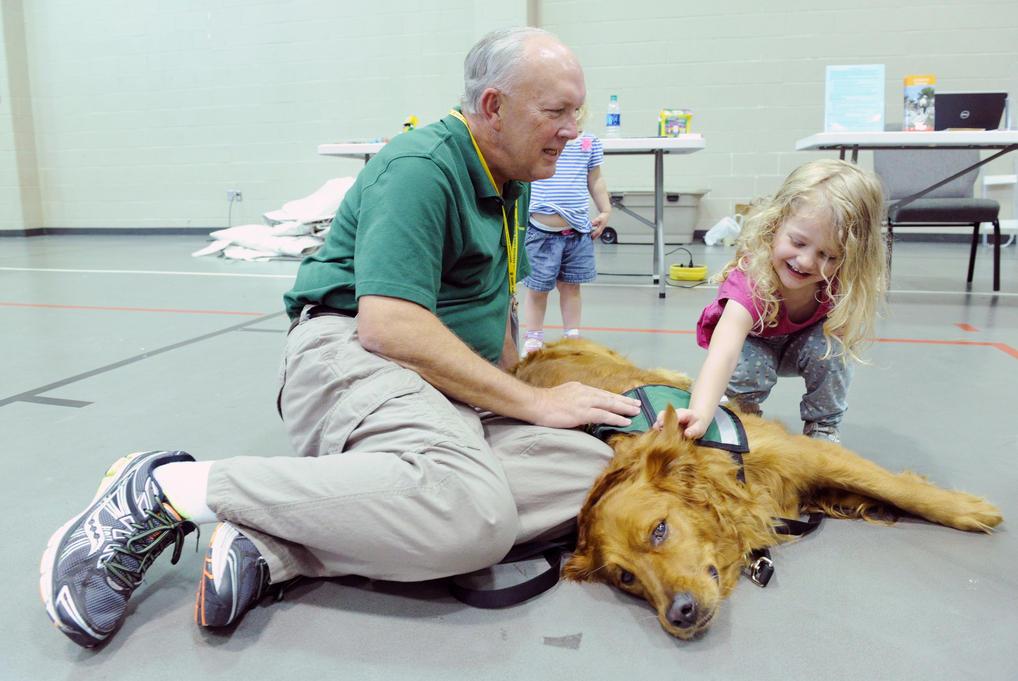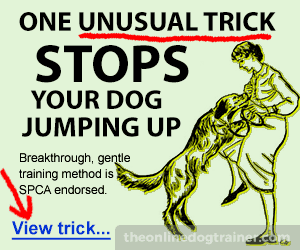Crisis Response Dogs Are Ready to Comfort You
By Jessica Stapf (US Federal Emergency Management Agency)

After stressful and traumatic events, people can seek relief in a variety of ways—talking with friends and loved ones, seeking counseling from professionals, or even through petting and cuddling with animals. You may have heard the term “therapy dog” or “comfort dog” and thought they were the same thing. For people who work in this field, there’s actually a distinction between the two.
Click here to fix your dog's behavior problem and get started with dog obedience training.
Therapy dogs operate in non-emergency environments: think of a college library packed with stressed students during finals — an environment that is definitely tense, but different from an active emergency. Comfort (or “crisis response”) dogs work during active crises and in emergency situations — both natural and man-made. They can offer a calming presence and a welcome distraction to those who have been impacted by disasters, often in shelters or in common public gathering spaces.
The positive impact of these dogs is clear when you consider the photo above from a shelter after flooding hit areas of Texas last summer:
Children are often the ones most affected by disasters, but dogs like Kenny (pictured) can help kids calm down, smile, and find a little piece of normal in situations that can be very much the opposite.
Comfort dogs and their handlers are unique—both complete specific trainings so they can be a source of relief in rapidly changing environments and situations. Their certification is designed to make sure they understand disaster response and they are then tested to ensure they can handle the high demands of a crisis environment.
Becoming certified with HOPE Animal-Assisted Crisis Response starts with a three-hour screening process that consists of an interview, grooming and handling of the dog, an obedience trial, supervised separation from the handler, a crate test, and a role-play exercise. The role-play test simulates a disaster shelter, testing four dogs at a time, to make sure that the dogs can handle changing conditions and situations they will encounter in the field. Completing this role-playing simulation is similar to how Urban Search and Rescue canines get trained — testing their skills in a simulated disaster environment that can often be unpredictable.
If the teams pass this section, the next step is to attend a three-day certification workshop. This workshop includes training on HOPE’s structure and operations, the Incident Command System, psychological first aid, phases of a disaster, stress management for handlers, and canine behavior and stress signals. These workshops are critical and help ensure teams are properly prepared and ready to handle whatever awaits them on assignments.
Just like with FEMA’s Urban Search and Rescue dogs, comfort dogs can be a variety of breeds. The individual dog and its temperament is what really matters. You see lots of Labs and golden retrievers, but HOPE Animal-Assisted Crisis Response has a whole spectrum of dogs: from Newfoundlands to Shihtzus and from mixed breeds to show dogs.
Teams spring into action after both manmade and natural disasters and FEMA works through HOPE Animal-Assisted Crisis Response to activate them. HOPE Animal-Assisted Crisis Response is a member of the National Voluntary Agencies Active in Disaster, a network of over 50 organizations committed to supporting individuals and communities impacted by disaster events. Their dogs helped us respond to the Oso mudslide in Washington state in 2014 as well as last fall’s historic flooding across South Carolina.
When teams are sent out on a disaster, they’re sent on what are referred to as “call-outs.” Others in emergency management would refer to these as “deployments” or “mission assignments.” Teams sent on a particular call-out are determined first by the needs of the organization requesting assistance, then by the teams’ proximity to the incident, their availability, and their experience. The length of a call-out can vary from a few hours to a few weeks depending on the size of the incident and how much the dogs and their handlers are needed.
These dogs and their handlers provide valuable services to communities across the country. We thank them for their service and their dedication to disaster responders and survivors and hope they get lots of treats.
Click here to fix your dog's behavior problem and get started with dog obedience training.







